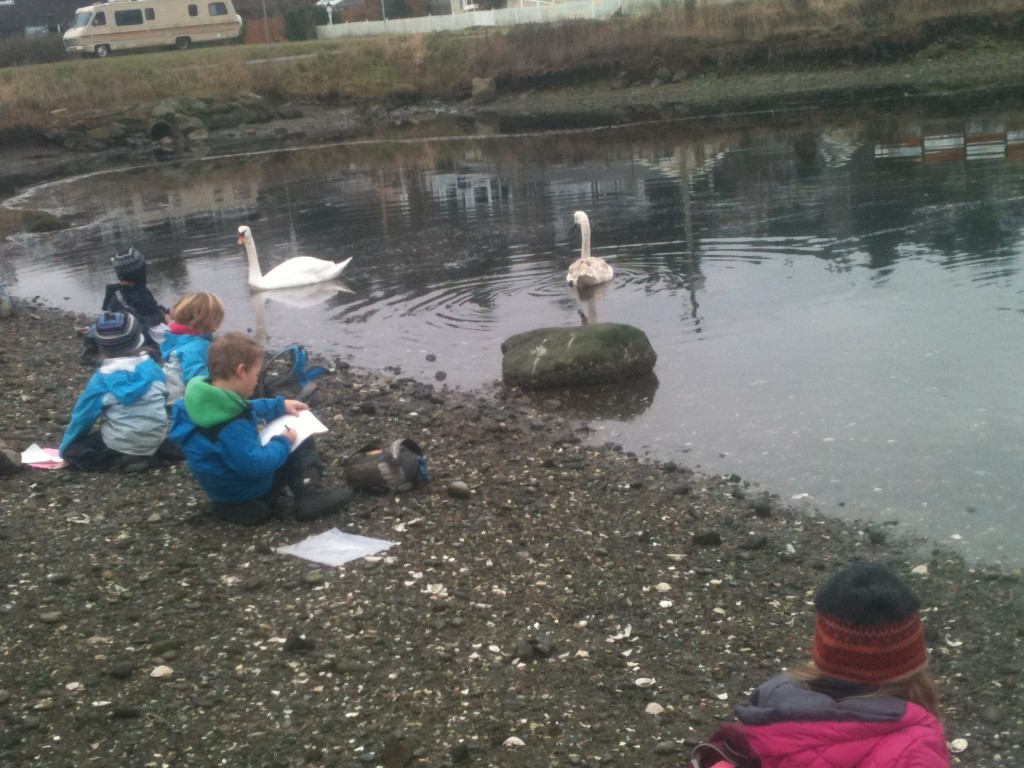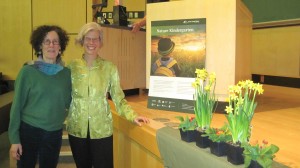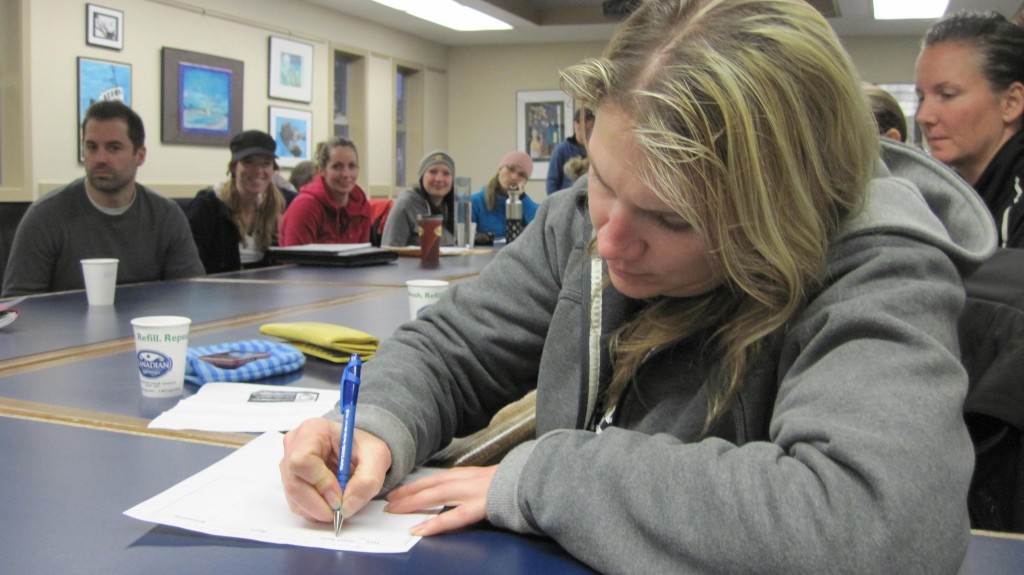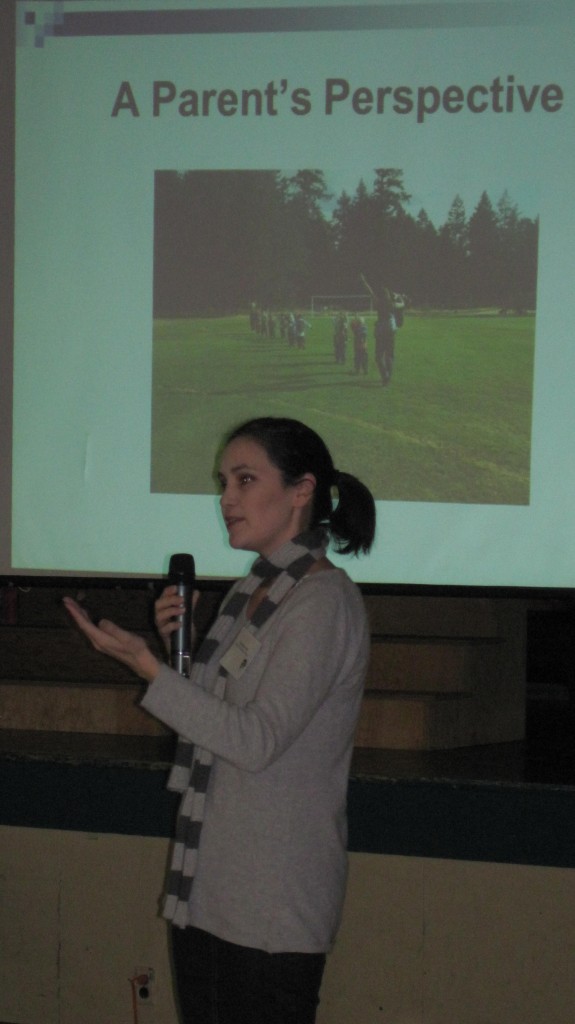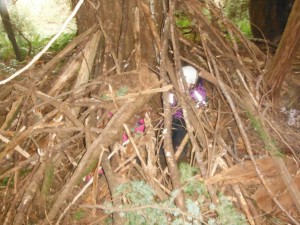The birds have been much more active in the last few weeks and the children have definitely become aware of this. Down one of our new trails the children spotted two ravens in a tree talking to each other and “fighting”. The children all lied down along the trail for 10 minutes to watch, listen and try to copy their sounds. This encounter accompanied with a woodpecker joining us up in his tree at a snack time sparked many questions from the children. After a great workshop with Claire Warden, this week Lisa and I took a new approach to helping the children answer their questions about the birds they are seeing.
On Monday we offered 3D and 2D objects about birds at a morning group time and the children began thinking, engaging, questioning and presenting information about birds. “I wonder what is inside that egg” asked a child. “It is a bird” offered one child. “I think it is a dragon” answered another. “How do birds fly” asked another child. “I wonder how they swim so well” a child asked. The children took these questions to the forest and began making nests, observing birds, playing bird games, drawing and spelling related bird words such as, fly, fast, bird, eagle, big, blue, egg and wood. They took our bird book and began to learn the names of many of the birds. They went on a bird hunt and counted birds on our walk down.
On Tuesday they took a field trip to the Goldstream nature house to learn all about eagles and the children were able to see one through a telescope. The children engaged back and forth for days about how birds fly, what their bones look like, how they swim, where they live, what and how they eat and then finally they wondered… is a bee a bird? It flies…
On Wednesday morning armed with that question the children as a group mapped out what types of animals are birds. “A bird has wings” a child described. “A bird flies” another thought. “But penguins don’t fly” another commented. “Birds have beaks, a moth doesn’t have a beak” One child noticed. “Birds have feathers, a bee doesn’t have feathers” another added. “Herons have colorful beaks” a child thought. Another child disagreed. “The sting ray looks like it has wings, but birds aren’t under water” a child thought. As a group the children grouped the pictures into groups of birds, nocturnal birds and non birds, insects and water animals connecting the pictures with their reasoning.
On Thursday their grade 7 buddies came and met us at the site and the children shared with them what they were learning. Together they made nests out of sticks, mud, grass and feathers that the children had collected.
On Friday we took at trip down to the lagoon and spent time with ducks, geese, swans and seagulls to answer our questions about how they swim and eat. The children spent their quiet time observing the birds in the water and air. That afternoon some children brought things about birds to share such as rocks that look like eggs, pictures of birds, a book, and a real Owl that was stuffed.
Overall this week the children learned how to present information they already knew and apply reasoning, critical thinking and observational skills to create new meaning. They learned to bounce ideas of each other, ask questions and find ways to answer those questions. They learned that sometimes the assumptions you first made may not always be correct. They learned what a bird actually is, by engaging in back and forth conversation. By observing birds in their natural habitat they learned about different ways birds eat, swim, make nests, and fly. They sounded out words related to birds, and represented what they know through drawings. I wonder what next week will bring!
(Written by Nature K ECE Erin Van Stone)